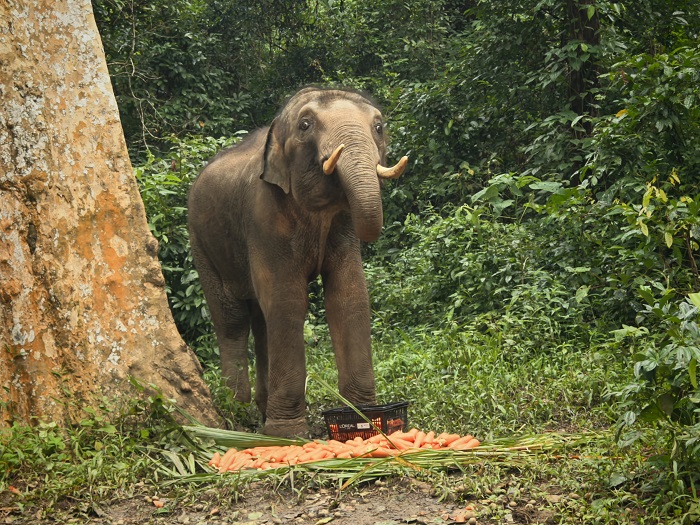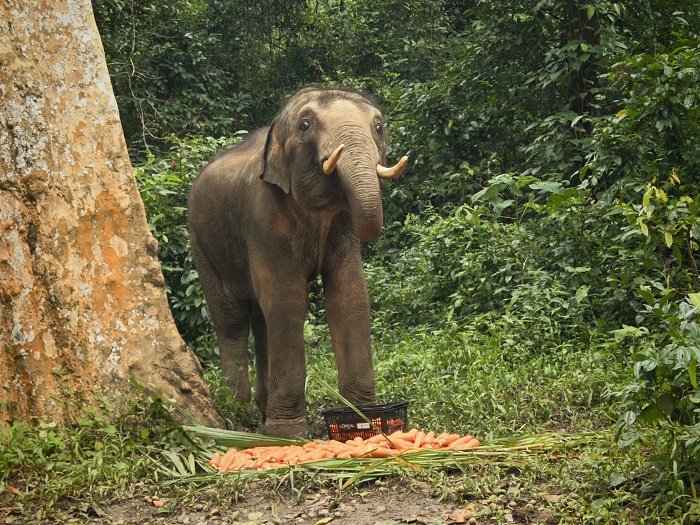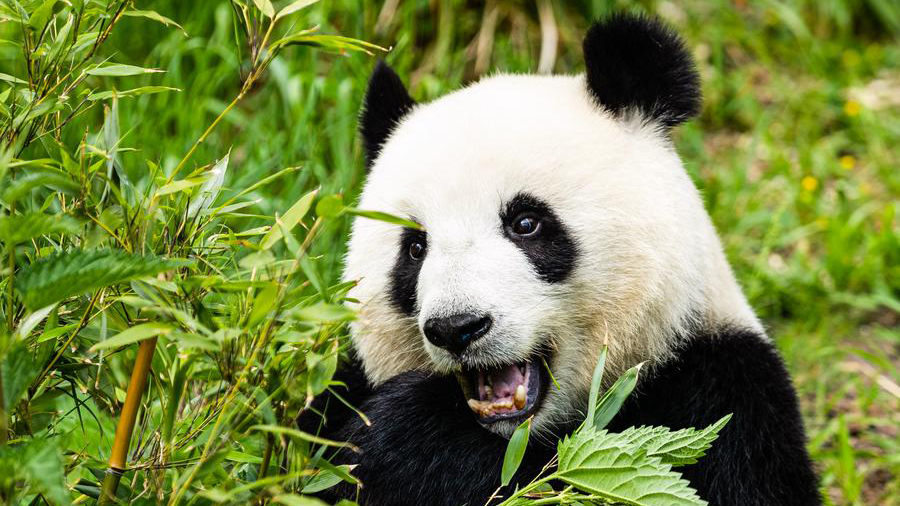Yunnan makes efforts to improve habitats for wild Asian elephants
With a nimble trunk, the wild Asian elephant "Xiaoqiang" sifted through a pile of carrots on the ground. Eventually, it settled on two long, thick ones, curling them up with the front part of its trunk before devouring them.
"Xiaoqiang" is lively and robust, showing no signs of its initial condition when it first arrived at the Asian Elephant Breeding and Rescue Center in Xishuangbanna Dai Autonomous Prefecture, southwest China's Yunnan Province.
In 2015, "Xiaoqiang," when it was only around 8 to 10 months old, was found orphaned near a village in Jinghong city of Yunnan. Despite its efforts to join the herd, it was rejected.
Monitoring personnel discovered that it was undernourished, lethargic, and had ingested plastic bags and parasites. "Xiaoqiang" was then brought to the center for shelter and medical treatment.

Photo shows "Xiaoqiang," a wild Asian elephant. (People's Daily/Zhang Chi)
Through meticulous care and treatment, "Xiaoqiang" has transformed into a lively animal, and has grown into a handsome young elephant. Its favorite food is carrots, and it consumes around 150 kilograms of food daily.
While "Xiaoqiang" is a story of success, Yunnan is looking to do more to protect its elephant population.
Enhancing scientific research and vigorously engaging in rescue and breeding efforts are crucial measures for safeguarding the wild Asian elephant population in the province.
Xiong Chaoyong, a staff member at the Xishuangbanna National Nature Reserve's Conservation and Management Bureau's Asian elephant conservation and management center, revealed that wild Asian elephants are currently found in 13 countries, including China, Thailand, and India, with a global population estimated at 40,000 to 50,000.
Despite the global decline in elephant numbers, China has witnessed a remarkable increase in its wild Asian elephant population, soaring from around 180 to over 300 in the past four decades.
The surge in Yunnan's wild Asian elephant population can be attributed to the preservation of their natural habitat. One crucial measure implemented is the establishment of feeding grounds.

An Asian elephant plays in the wild in southwest China's Yunnan Province. (Photo courtesy of the media convergence center of Xishuangbanna Dai Autonomous Prefecture)
"Feeding grounds are planted with elephant grass, bamboo leaves, and other foods that Asian elephants enjoy. The feeding grounds are located in areas away from villages and farmlands, ensuring the elephants have enough to eat while reducing the likelihood they enter populated areas," Xiong explained.
To enhance protection of wild Asian elephants, Yunnan began to apply for the construction of a national park for Asian elephants in 2022.
According to a work plan for the construction of the national park for Asian elephants developed by the Forestry and Grassland Bureau of Yunnan, the primary objectives of the park are to protect the region's tropical rainforests, enhance conservation efforts for the Asian elephant population and their habitats, and mitigate conflicts between humans and elephants.
Photos
Related Stories
- Wild elephants seen in Sri Lanka
- Baby elephant party
- China's "wandering elephants" welcome new members
- An elephant's journey is conservation milestone
- Asian elephant family frolics in river
- Program helps locals live with elephants
- Short-legged baby elephant stumbles across tree trunk
- Stubbornly playful! Young elephant's refusal to join herd in water frustrates elder
- Playful baby elephant annoys impatient sister
- Wild Asian elephants play happily in SW China's Yunnan
Copyright © 2024 People's Daily Online. All Rights Reserved.









